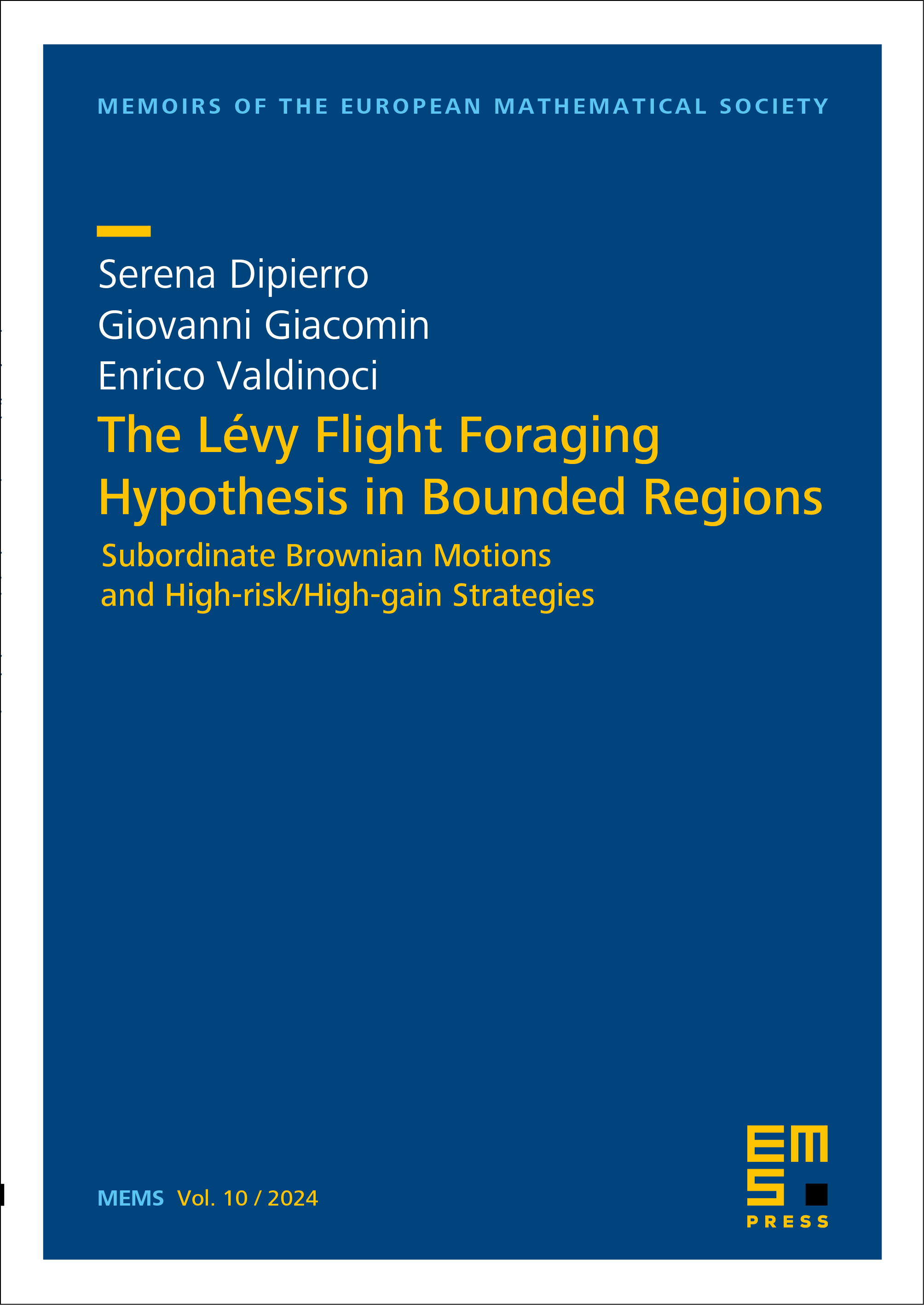The Lévy Flight Foraging Hypothesis in Bounded Regions
Subordinate Brownian Motions and High-risk/High-gain Strategies
Serena Dipierro
University of Western Australia, Crawley, AustraliaGiovanni Giacomin
University of Western Australia, Crawley, AustraliaEnrico Valdinoci
University of Western Australia, Crawley, Australia

This book is published open access.
We investigate the problem of the Lévy flight foraging hypothesis in an ecological niche described by a bounded region of space, with either absorbing or reflecting boundary conditions.
To this end, we consider a forager diffusing according to a fractional heat equation in a bounded domain and we define several efficiency functionals whose optimality is discussed in relation to the fractional exponent of the diffusive equation.
Such an equation is taken to be the spectral fractional heat equation (with Dirichlet or Neumann boundary conditions).
We analyze the biological scenarios in which a target is close to the forager or far from it. In particular, for all the efficiency functionals considered here, we show that if the target is close enough to the forager, then the most rewarding search strategy will be in a small neighborhood of .
Interestingly, we show that is a global pessimizer for some of the efficiency functionals. From this, together with the aforementioned optimality results, we deduce that the most rewarding strategy can be unsafe or unreliable in practice, given its proximity with the pessimizing exponent, thus the forager may opt for a less performant, but safer, hunting method.
The biological literature has collected several pieces of evidence of foragers diffusing with very low Lévy exponents, often in relation with a high energetic content of the prey. It is thereby suggestive to relate these patterns, which are induced by distributions with a very fat tail, with a high-risk/high-gain strategy, in which the forager adopts a potentially very profitable, but also potentially completely unrewarding, strategy due to the high value of the possible outcome.